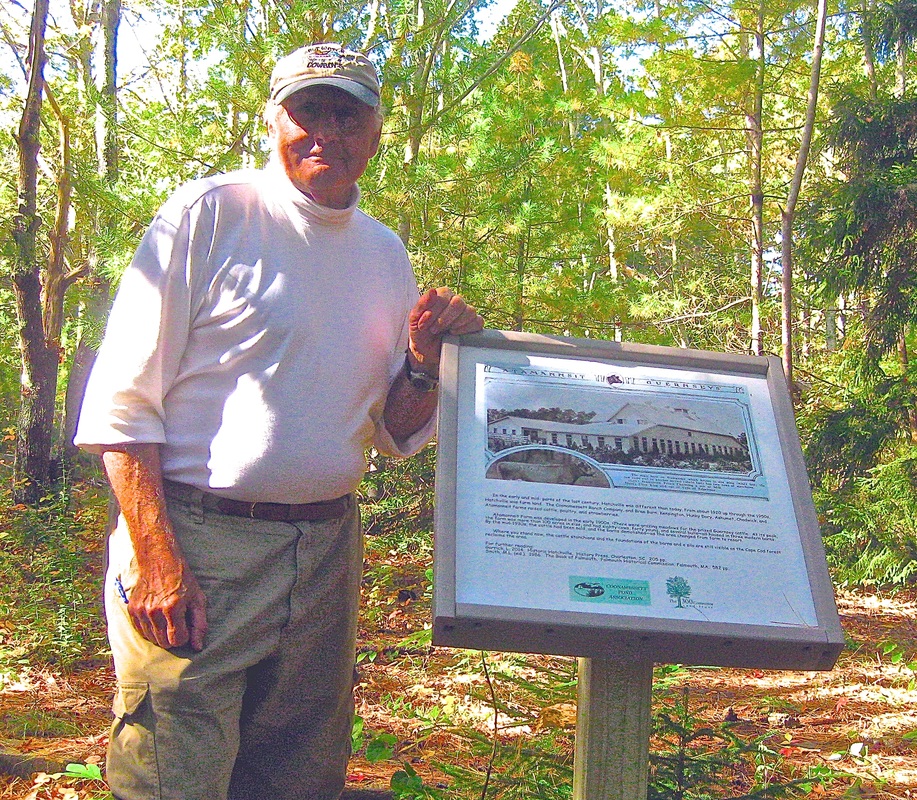History of Coonamessett Pond

Highlights of Coonamessett Pond
1. Crane Wildlife area http://www.300committee.org/cranewildlife.htm 2. Coonamessett Ranch Conservation Land http://swallowsnest.com/crane_wildlife.htm#Coonamessett 3. Head of the Coonamesett River and Public beach http://www.mass.gov/eea/docs/dep/water/resources/maps/mor/falmouth-mor-2.pdf 4. Cape Cod Country Club http://www.capecodcountryclub.com 5. Round Pond http://www.mass.gov/eea/docs/dfg/dfw/habitat/maps-ponds/dfwcoon.pdf 6. Town of Falmouth Ball fields 7. Dupee Parcel Conservation land http://300committee.org/doc/coonamessett.pdf 8. Souza parcel Conservation land http://300committee.org/matthewsouza.htm 9. State Public landing http://www.mass.gov/eea/docs/dfg/dfw/habitat/maps-ponds/dfwcoon.pdf 10. Coonamessett Farm http://www.coonamessettfarm.com 11. Alchemy Farms http://www.ic.org/directory/alchemy-farm/ Visiting History
Hidden in the woods in the Dupee Conservation Parcel are the hints of what Hatchville was like decades ago. The foundations of old barns and a silo are visible. Visitors can see first hand, evidence of what author Les Garrick describes in his book, Historic Hatchville: Horse and Farm Country on Cape Cod, http://www.amazon.com/Historic-Hatchville-Horse-Farm-Country/dp/1626195110 |
Dupee Conservation Area
Starting with public access for fishing, Falmouth began protecting land around Coonamessett Pond and the Coonamessett River more than 40 years ago. 212 acres were preserved in 1986, the first year The 300 Committee campaigned for town acquisition of open space, preventing development of a 225-home subdivision. Another significant step in the town’s long-term efforts to protect the Coonamessett River corridor came in 2002 with the purchase of 61.6 acreas from Paul Dupee.
Although the property, off Hatchville Road, is dense with trees and an understory of briars and huckleberry, the foundation of an old barn serves as a reminder of the large dairy farms that dominated Hatchville in the last century. Atamannsit, the private road that leads to several houses on the pond, takes its name from one of the leading dairy farms. George St. Amant purchased some 123 acres on the pond in 1915. He first used the land as a fishing and hunting camp. Then he went in the dairy business, and Atamannsit Farm became one of the largest farms on the Cape, known for its purebread Guernsey cattle. The Depression forced Mr. St. Amant to give up farming and sell his cattle. He put the land up for sale, and in 1938, Norman E. Dupee bought the 123 acres through foreclosure for $20,000. The land was divided among Mr. Dupee’s three children. His son Norman tried his hand at cranberry farming and growing exotic bulbs and Christmas trees. He didn’t sell many. The evergreens are still there, now nearly 40 feet tall. Although most of the land on the pond front is privately owned, the town parcel now includes a small section of beach. The Matt Souza Conservation Area The Matt Souza Conservation Area is a long, narrow parcel at the headwaters of the Coonamessett River. The property follows the river from Hatchville Road north to the Coonamessett Pond. A rutted, dirt road through 25 acreas provides boating access for fishing. At 158 acres, Coonamessett is the town’s largest pond, and the herring run that leads to Great Pond on Vineyard Sound is the town’s most important run. Efforts to protect the herring run started in 1964 when the town purchased a small parcel bordering the river. More land was acquired in 1970. The parcel was dedicated to the town’s long-time game warden and conservation officer, Matthew R. Souza. Matt Souza retired in 1974 after 30 years of service. He was always and advocate for and guardian of Falmouth’s woods. A small parking area and kiosk on the north side of Hatchville Road, just beyond the entrance to Atamannsit Road, provides access for both the Matt Souza and Dupee conservation areas. |

